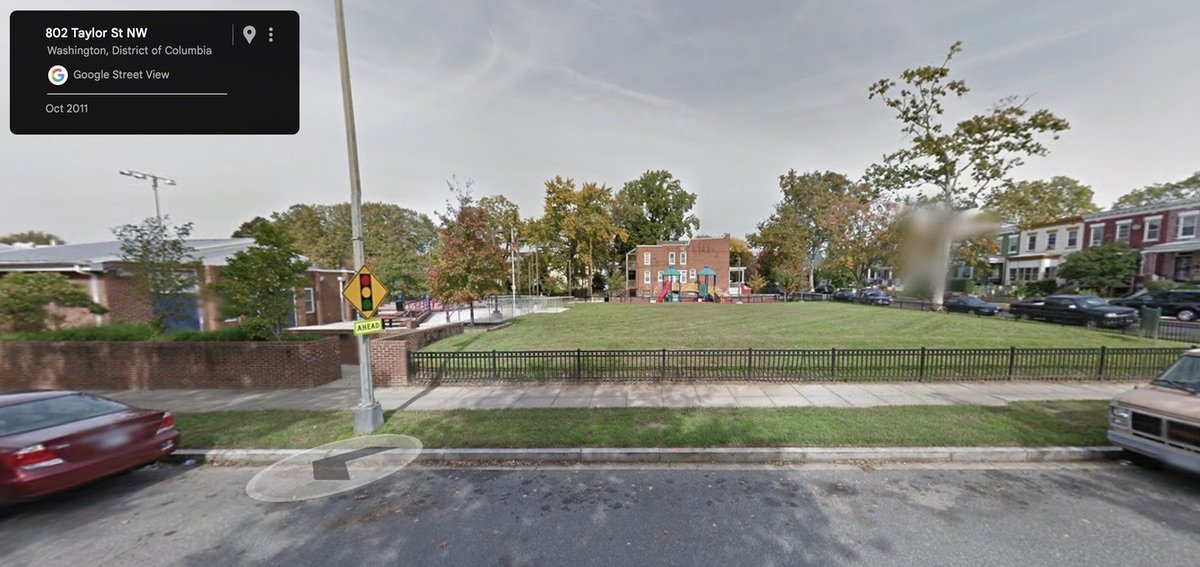Op-Ed: If a tree falls in Petworth and nobody hears it
/A black walnut tree in a neighbor's backyard
By Tom Burnett
(Ed note: Local resident Tom Burnett writes the following op-ed, with the hope to share thoughts about an old tree that he loved — and what it means to be a good neighbor.)
Every day on my way to work I pass a beautiful, enormous black walnut tree in a back alley of Petworth. It stands watch over our rowhouses like a gentle giant, residing here since before our neighborhood was built over a century ago. Its trunk is so stout that it would take two people to wrap their arms around it.
To my horror, on my way home last week, I observed a work crew hauling away its decapitated branches, leaving nothing but a twelve foot stump in the ground. In shock, I walked up to the foreman and asked, “Do you have a permit for removing that tree?”
He responded nonchalantly, “I don’t need one. It’s still alive,” gesturing to the naked carcass that remained.
“You have got to be kidding me,” I retorted.
He turned and pointed to his truck which was emblazoned “H&H Tree Experts.” With that, I turned and walked away. I was sad and upset, but also filled with a sense of guilt. Could I have done something to prevent this from happening?
For a full year leading up to this day, I had a premonition that this tree would be cut down. It troubled me so much that I introduced myself to the homeowner last fall to talk about it. She mentioned that she was worried that it would fall down in a storm and cause severe property damage that she would then be liable for. The tree looked robust and healthy to me, but since I am no tree expert, I sought professional assistance. I contacted my ANC commissioner, Brandon Todd’s office, and DDOT’s Urban Forestry Administration. Given the city’s commitment to preserving our tree canopy, I was hoping that UFA had an arborist on staff who could take a quick look at the tree and assure the homeowner that it posed no risk. Unfortunately, since the tree resided on private property, they told me that they had no resources for consultations about preserving trees (ironically, they do have funds dedicated to removing them). They said that homeowners had to procure the services of private arborists even if it posed a financial hardship for them.
So I tracked down the name of a licensed arborist living in my neighborhood and planned to pass along this information. But then I stopped and asked myself, “Am I trying too hard here? Am I being a nosy, pushy neighbor?” It seemed rather presumptuous to ask a neighbor who I hardly knew to pay for a consultation that she never asked for. So I let it drop. That was in August 2015. Less than a year later, that tree was cut down.
In hindsight, would I have done anything differently? Absolutely—I would have volunteered to pay for the arborist consultation myself. That tree was on one individual’s property, but it produced a great public benefit. In addition to being a delight to look at, trees like this one provide shade and respite from the summer heat, reduce the costs of air conditioning, increase property value, mitigate stormwater, and improve air quality (learn more benefits at Casey Trees website). For all these reasons, it would be well worth my money to preserve the biggest tree on the block.
While it’s too late for this particular tree, I want to encourage neighbors to take a close look at the mature trees on their blocks. Neighbors who are tree lovers could pitch in a little money to pay for an arborist consultation for trees on the property of seniors with fixed incomes or those with limited budgets. All of us benefit from mature trees, so we could certainly share some of the minimal costs of preventative care and pruning.
Additionally, make sure your neighbors know that trees greater than 44 inches in circumference require a permit for removal, even on private property. These permits are not cheap, especially given the Tree Canopy Protection Amendment Act of 2016 in the District of Columbia: at $55 per circumference inch, a tree that’s only 14 inches thick would require a $2,400 permit, plus the cost of tree removal. If you think that is expensive, consider the cost of the fine for failure to secure a permit. Cutting down that tree of that size would lead to a fine of $13,200 (at $300 per circumference inch). So be sure to measure before you consider cutting! And definitely don’t employ the services of a contractor that’s willing to remove a mature tree without a permit — the property owner, not the contractor, will be liable for the steep fine.
Moving forward, I would prefer to see the Urban Forestry Administration to put more emphasis on preventative services to protect healthy trees rather than punitive measures that only come into play after a tree has been destroyed. At the same time, we can’t expect our city services to be perfect either. By banding together as neighbors and looking out for one another, we can protect vital resources and maintain beautiful neighborhoods that we can all celebrate.
Thomas Burnett works in communications at the National Academy of Sciences. In his free time, he and his wife Alyson love riding bikes, watching theater performances, and sitting on the front porch of their Petworth rowhouse.



















